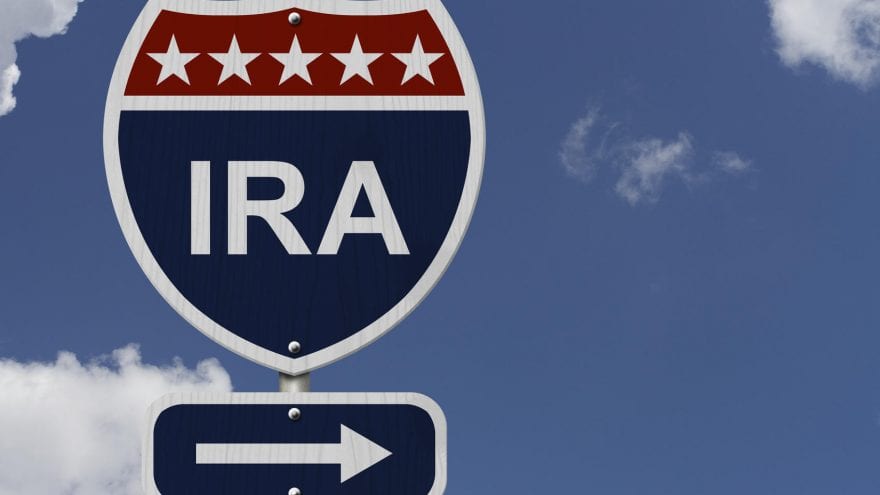Mandatory Withdrawals from a Traditional IRA while the owner is living Q & A

In my previous article, I summarized some of the most basic rules and regulations that apply to mandatory withdrawals from Traditional IRAs (TIRAs), while the owner of the account is still living.
This article basically is a question-and-answer session. I will answer a few questions from real customers and I hope that my answers to some of these questions will give a good indication of how to handle some specific issues, as well as what options IRA owners have in similar circumstances.
Q: I have a SIMPLE IRA at work, where I still am employed and will continue to work through my first Required Minimum Distribution (RMD) year, which will be next year. I am a little confused and I wonder whether I must take a RMD from my SIMPLE IRA even though I still contribute to it each year and plan to continue contributing?
A: Yes. This is an odd situation. However, the law requires that all non-Roth IRAs be subject to RMDs for the year one attains age 70.5 and each year thereafter. Interestingly, there are no exceptions to this, unless Congress grants a reprieve, as done in 2009. Therefore, even though you are contributing to your SIMPLE IRA on one end – which is a very good idea, due to the mandatory employer match you get for your contribution – you must calculate an RMD at the other end. However, keep in mind that you do not actually have to take the withdrawal from the SIMPLE IRA. You may take the withdrawal from any other non-Roth IRA you might have as the IRS considers all SIMPLE IRAs, SEP IRAs and Traditional IRAs to be just one big Traditional IRA for RMD purposes.
Q: I have two past employers who hold the 401(k) plans to which I contributed when I worked there. I have not rolled them over because I am engaged in a risky hobby – airplanes – that could result in future liability suits. I understand that these employer retirement plans would be exempt from any such liability suits. I will be 70 this April. How must the RMDs be handled?
A: Interestingly, employer retirement plans – except for SEP and SIMPLE IRAs – each must calculate their own RMD when you attain age 70.5 and must make the distribution out of the retirement plan to you. If you have more than one employer-sponsored retirement plan, each plan must do its own RMD calculation and make its own distribution. But, there are two exceptions to this rule.
First, if you continue to work for the employer and own less than 5% of the company, the IRS does not require you to take a RMD at age 70.5 and older. However, some plans might require the RMD even though the IRS does not.
Second, there is an exception for government-offered 403(b) plans – usually school districts – or non-profit employers. If a former employee worked for more than one such employer and has more than one 403(b) plan, which are sometimes called tax-sheltered annuity plans, the separate 403(b) plans may be added together and the RMD may be taken from any one or more of the 403(b) plans.
Q: I will turn 70 this coming July. Do I have to calculate my own RMD?
A: No, you do not. The IRA custodian is required to do this for you, based only on the TIRA for which they are the custodian. Also, remember that your first RMD will not be due until next year or as late as April 1 of the year after next, as you will be 70.5 next year, not this year. However, if you elect to defer your first RMD to the next year, you will then have two RMDs for that year, as all subsequent RMDs must be removed by December 31.
Q: If the custodian has to notify me of my impending TIRA RMD and calculate the amount for me – as covered in the previous question – why don’t they just send me a check for the RMD and be done with it?
A: The rules for the TIRA RMD say that although you must include all applicable TIRAs, SEP IRAs, SIMPLE IRAs and SARSEPs you might own in determining your RMD, you may take the RMD from any or all of these accounts, as long as the total distribution amount at least equals your RMD. Your TIRA custodian does not know how many other IRAs you might own and so cannot really make the decision to make the distribution from the TIRA they hold as the custodian. Instead, that decision is left up to you.
Q: What would be the best way to try to coordinate household income needs with Required Minimum Distribution (RMD) withdrawals when we turn 70.5 in two years? Is there some formula to help us do this?
A: The RMD does not require that you actually convert some investments in your TIRA into cash and then withdraw the cash and spend it. The only requirement is that the RMD amount is transferred out of the TIRA not later than Dec. 31 each year – or the following April 1 only for the first RMD year. Therefore, if you do not need the actual cash for household income, you simply could take the most tax efficient shares of stock or mutual fund in the TIRA, figure out how many shares it would take to equal the amount of the RMD and then ask the IRA custodian to transfer these shares to your taxable brokerage account “in-kind.” This transfer does not involve the sale and repurchase of these shares, although the brokerage will treat them as though they had. The form 1099R issued at the beginning of the next year will show the distribution amount as the RMD. But the only thing that has changed for the TIRA owner is some of his or her shares of a stock/mutual fund will now sit in a taxable account and he/she will have a higher income tax bill that year due to the RMD being added to their income. But, the investment allocation has not changed. Thus, the plan for meeting household cash flow needs and the RMD should be kept separate.
Q: If I am not allowed to deduct my Qualified Charitable Distribution (QCD), then what tax benefit do I gain with a QCD over simply taking the RMD and then donating to a charity?
A: This might make no difference for some people and could make considerable financial difference for others. With the QCD, the IRA owner does not have to include the amount of the RMD in her income before donating it to the charity. Therefore, if the IRA owner already itemized her deductions on Schedule A for that year, then directly taking the RMD as income and then deducting the same amount as a charitable contribution on her Schedule A versus using the QCD would make no difference for federal tax purposes. However, if the IRA owner did not have enough Schedule A deductions to itemize and instead took the standard deduction, then using the QCD means she does not have to pay the tax on the RMD. Alternatively, taking the RMD first as income, then donating it with no ability to deduct it means that she will pay tax on the RMD.
Also, because the QCD keeps the RMD from being included in ones Adjusted Gross Income (AGI), this may affect how much of the household’s Social Security must be included in their income. If the RMD had to be included in AGI, it may raise the IRA owner’s Medicare Part B and/or Part D premiums or perhaps the phase-out for some deduction or tax credit.
Under the recently passed Tax Cut and Job Creation Act, this even becomes more important. The new higher standard deduction of $24,000 beginning in 2018 plus an added $1,300 each, $2,600 for those married age 65 and older, means more households will be using the standard deduction and so a QCD will become a much better method of making regular cash contributions to charities.
Q: I turned 70 in February this year and retired last year from my employer but left my 401(k) plan balance with the employer. Can I have my retirement plan balance rolled over to my TIRA this year before I take my first RMD, so that I can take the RMD from my TIRA instead of the plan? I do not get along very well with the plan administrator and I would like to avoid her, if possible.
A: No, the RMD amount must remain in the plan until it is removed. Consider that one second after midnight on Jan. 1 of the year you attain age 70.5, an RMD is formed. Once you have left the employer, this amount has but one fate – REMOVAL. This amount may not be rolled over, it may not be converted to a Roth IRA, it may not be transferred and it may not be postponed. It must be removed from the plan and included that year on the IRA owner’s income tax. Please note that the Qualified Charitable Distribution is an exception to this, as it allows the RMD to be granted directly to a charity. However, once the RMD amount has been determined and removed from the plan, the remainder of the plan may be rolled over to your TIRA and all future RMDs taken from your TIRA.
Now that I have covered basic rules and requirements for mandatory IRA withdrawal while the IRA owner is still alive, I will conclude the section of several articles about IRA withdrawals and rollovers by explaining what investors need to know about mandatory withdrawals from a TIRA and RIRA at the death of the owner. After that article, I will complete this IRA quick reference guide series of articles with a few additional articles covering potential tax issues and naming beneficiaries, as well as IRA administration and custodial issues.

Bruce Miller is a certified financial planner (CFP) who also is the author of Retirement Investing for INCOME ONLY: How to invest for reliable income in Retirement ONLY from Dividends and IRA Quick Reference Guide.




